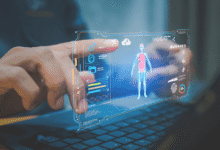How Wearable Tech is Revolutionizing Preventive Medicine
How Wearable Tech is Revolutionizing Preventive Medicine Discover how smart devices enable early health detection continuous monitoring and personalized preventive care for better long-term wellness.

Wearable technology is transforming preventive medicine by empowering individuals to monitor their health in real time and enabling early detection of potential medical issues. Devices like smartwatches, fitness trackers, and biosensors track vital signs such as heart rate, blood pressure, sleep patterns, and even blood glucose levels, providing users with actionable insights. This continuous flow of health data allows for proactive interventions, reducing the risk of chronic diseases and hospitalizations. By shifting healthcare from a reactive to a preventive model, wearable tech is helping people take control of their well-being like never before.
The integration of artificial intelligence (AI) and machine learning further enhances the capabilities of wearable devices, offering personalized recommendations based on collected data. From detecting irregular heart rhythms to alerting users about potential sleep disorders, these innovations bridge the gap between patients and healthcare providers. As wearable technology becomes more advanced and accessible, it is poised to revolutionize preventive medicine, making healthcare more efficient, personalized, and cost-effective. The future of medicine lies not just in treating illness but in preventing it and wearable tech is leading the charge.
How Wearable Tech is Revolutionizing Preventive Medicine
The Rise of Wearable Technology in Healthcare
Wearable technology has evolved from simple fitness trackers to sophisticated medical devices capable of monitoring a wide range of physiological parameters. The global wearable tech market is expanding rapidly, driven by advancements in sensor technology, artificial intelligence (AI), and wireless connectivity. Devices like the Apple Watch, Fitbit, and specialized medical wearables such as continuous glucose monitors (CGMs) are now integral tools in preventive healthcare. These wearables collect vast amounts of health data, allowing users and physicians to identify trends, detect anomalies, and intervene before serious health issues arise.
Continuous Health Monitoring and Early Detection
24/7 Health Monitoring vs. Periodic Check-ups
Traditional medical check-ups provide only momentary snapshots of health, often missing critical fluctuations or early warning signs that occur between visits. Wearable technology solves this limitation by offering continuous, real-time monitoring of vital signs like heart rate, blood pressure, oxygen saturation, and sleep patterns. For instance, smartwatches with ECG capabilities can detect irregular heart rhythms (such as atrial fibrillation) at any time, even while the user sleeps or exercises. This constant data stream allows for earlier detection of abnormalities that might otherwise go unnoticed until symptoms become severe.
Early Disease Detection and Prevention of Complications
By tracking physiological data around the clock, wearables can identify subtle changes that signal developing health issues. Sleep trackers, for example, can detect patterns consistent with sleep apnea a condition often undiagnosed until it causes serious cardiovascular strain. Similarly, blood oxygen sensors can alert users to respiratory problems before they escalate. Early detection enables prompt medical intervention, preventing complications such as strokes (from untreated AFib), heart disease (from chronic sleep deprivation), or severe respiratory distress. This shift from reactive to preventive healthcare not only improves individual outcomes but also reduces long-term healthcare costs by avoiding emergency treatments and hospitalizations.
Personalized Healthcare and Data-Driven Insights
Wearable devices generate personalized health data that can be analyzed to tailor individual wellness plans. AI-powered algorithms process this data to provide customized recommendations, such as adjusting exercise routines, improving sleep hygiene, or modifying dietary habits. For chronic condition management, wearables like CGMs help diabetics maintain optimal blood sugar levels by providing real-time feedback. Additionally, healthcare providers can use aggregated wearable data to identify population health trends and develop targeted preventive strategies. This shift toward personalized, data-driven medicine enhances patient engagement and promotes healthier lifestyles.
Bridging the Gap Between Patients and Doctors
Remote Patient Monitoring Enhances Continuous Care
Wearable technology enables seamless remote patient monitoring (RPM), allowing healthcare providers to track patients’ vital signs and symptoms in real time without requiring in-person visits. This is particularly valuable for managing chronic conditions (like diabetes, hypertension, or heart disease), post-operative recovery, and elderly care. Doctors receive alerts if a patient’s metrics deviate from baseline, enabling early intervention before complications arise. For example, a sudden spike in blood pressure or irregular heart rhythm can trigger an immediate telehealth consultation or medication adjustment, reducing unnecessary ER visits and hospital readmissions.
Integration with EHRs for Smarter Data-Driven Decisions
By syncing wearable data directly into electronic health records (EHRs), physicians gain a holistic, up-to-date view of a patient’s health trends over time. This integration eliminates guesswork, as doctors can review long-term patterns (like sleep quality, activity levels, or glucose fluctuations) alongside traditional lab results. For high-risk patients, wearables with fall detection and SOS alerts automatically notify caregivers during emergencies, improving response times. This proactive, data-backed approach not only personalizes treatment plans but also strengthens preventive care by identifying risks before they escalate into critical health events.
Challenges and Limitations
Despite their potential, wearable technologies face several challenges. Data privacy and security concerns arise as sensitive health information is transmitted wirelessly. Accuracy and reliability of wearable sensors can vary, leading to false alarms or missed detections. Additionally, the high cost of advanced medical wearables may limit accessibility for some populations. Regulatory hurdles and the need for standardized data formats also pose obstacles to widespread adoption. Addressing these challenges is crucial to ensuring that wearable tech fulfills its promise in preventive medicine.
The Future of Wearables in Preventive Healthcare
The future of wearable technology in preventive medicine looks promising, with innovations like smart fabrics, non-invasive blood pressure monitors, and AI-enhanced diagnostics on the horizon. Integration with telemedicine platforms will further enhance remote care, while advancements in battery life and miniaturization will improve user convenience. As wearables become more accurate, affordable, and widely adopted, they will play an increasingly vital role in shifting healthcare from treatment-focused to prevention-oriented. By empowering individuals with real-time health insights, wearable tech has the potential to reduce healthcare costs, improve quality of life, and extend longevity.
Read More: How Sleep Trackers Can Help You Improve Mental Health
Conclusion
Wearable technology is revolutionizing preventive medicine by enabling continuous health monitoring, early disease detection, and personalized care. These devices empower individuals to take charge of their health while providing healthcare professionals with valuable data to improve patient outcomes. Despite challenges like data privacy and accuracy, the future of wearables in healthcare is bright, with ongoing innovations promising even greater advancements.
As wearable tech becomes more integrated into everyday life, its role in preventive medicine will only grow stronger. By fostering a proactive approach to health, these devices have the potential to transform healthcare systems worldwide, reducing the burden of chronic diseases and promoting overall wellness. The journey toward a healthier future is being shaped by the data-driven insights and preventive capabilities of wearable technology.
FAQs
How does wearable tech help in preventive medicine?
Wearable tech monitors vital signs continuously, enabling early detection of health issues and promoting proactive care through real-time data and personalized insights.
Are wearable health devices accurate?
While many wearables are highly accurate, some variability exists. Medical-grade devices tend to be more reliable than consumer fitness trackers for clinical use.
What are the privacy concerns with wearable tech?
Wearables collect sensitive health data, raising concerns about data breaches and unauthorized access. Strong encryption and secure platforms are essential for protection.
Can wearables replace doctor visits?
No, wearables complement medical care by providing additional data but cannot replace professional diagnosis and treatment from healthcare providers.
What is the future of wearable technology in healthcare?
Future advancements include smarter AI analysis, non-invasive sensors, and integration with telemedicine, making preventive care more accessible and effective.











